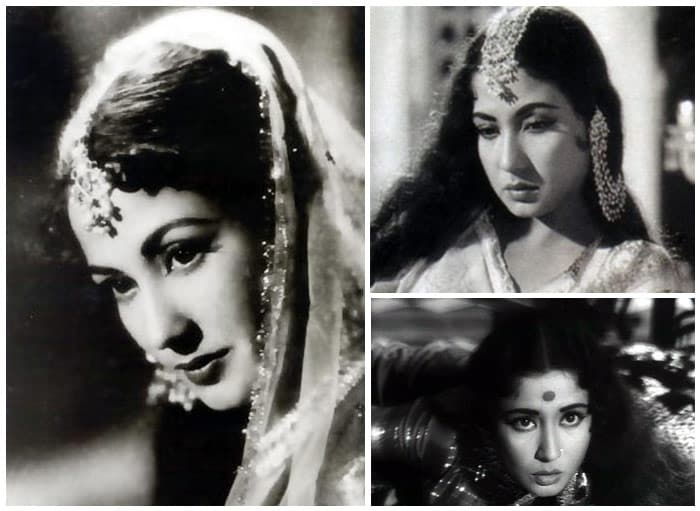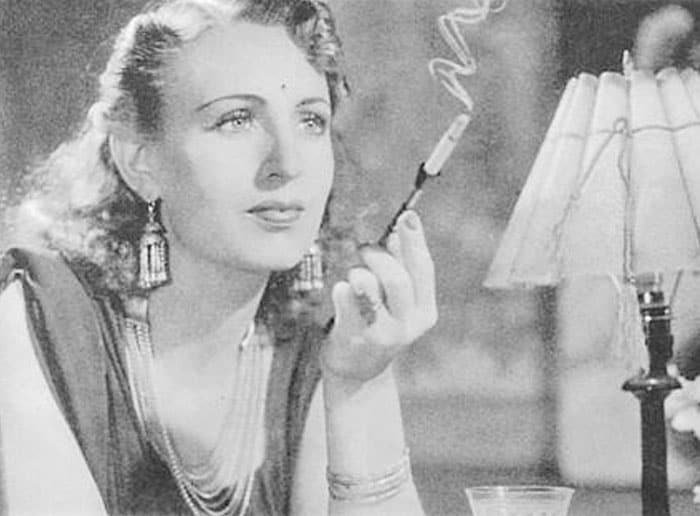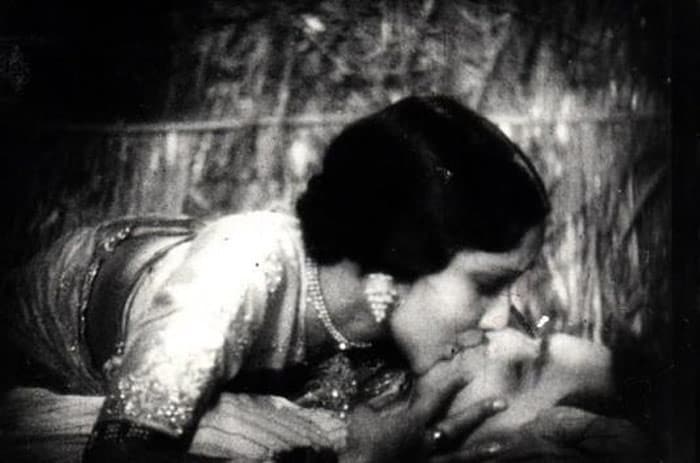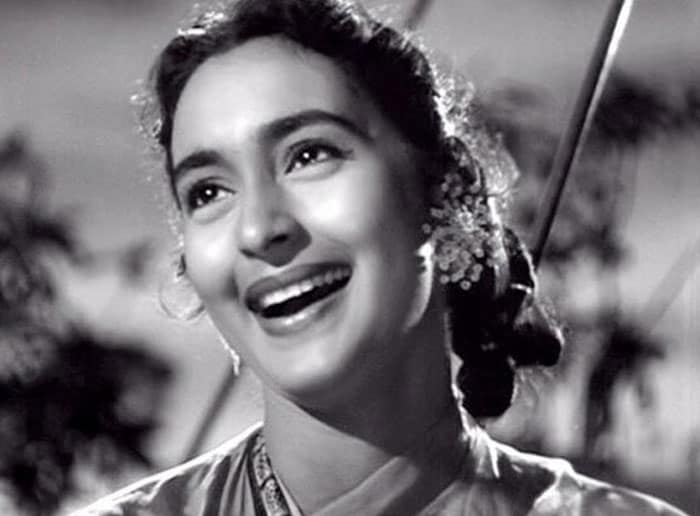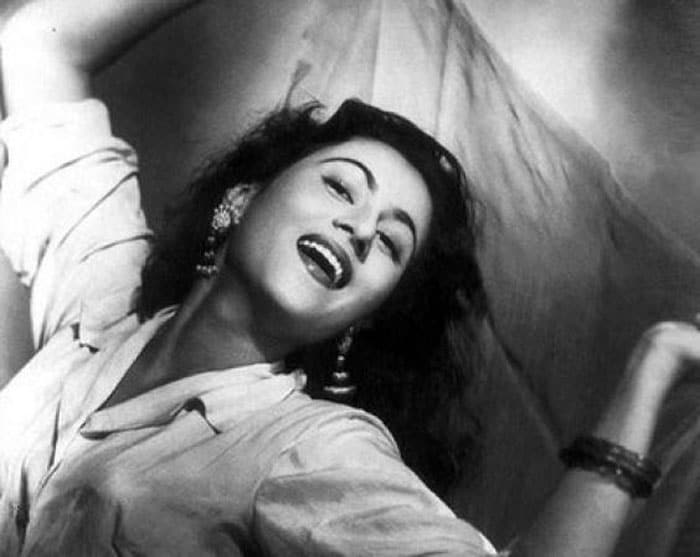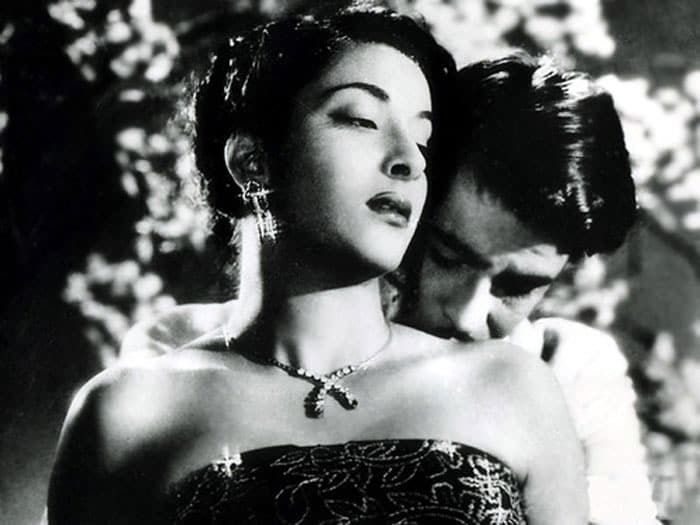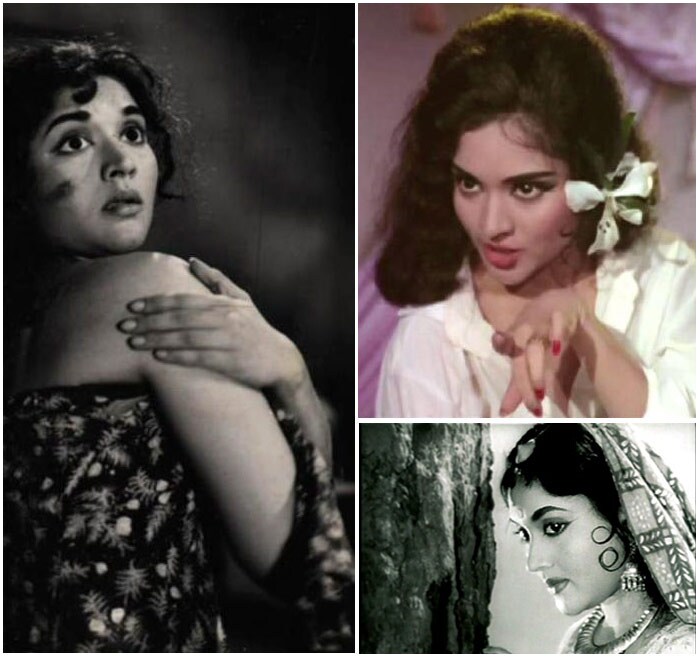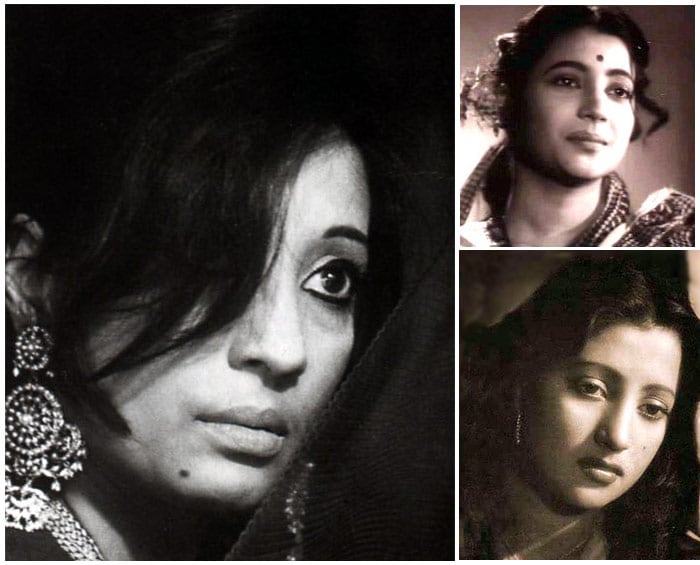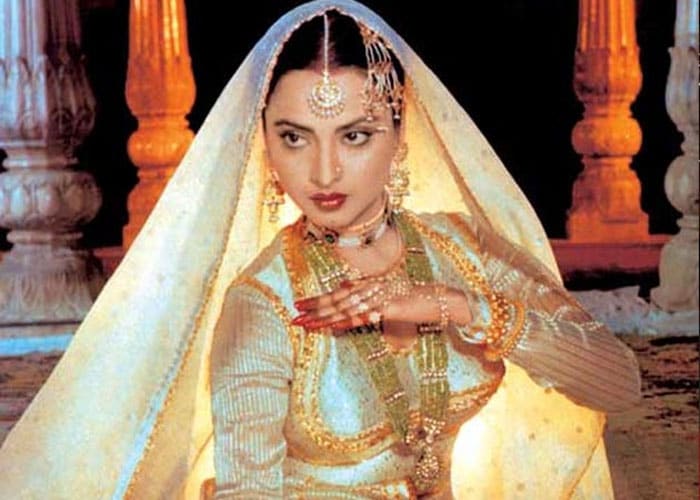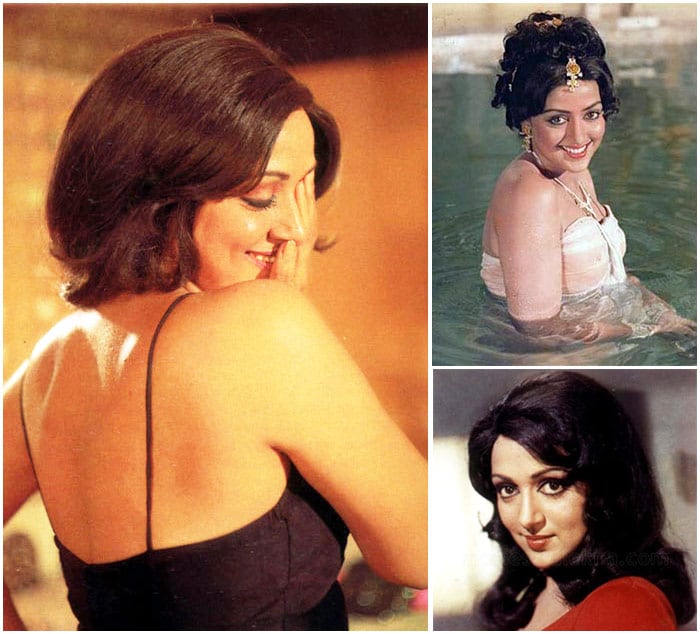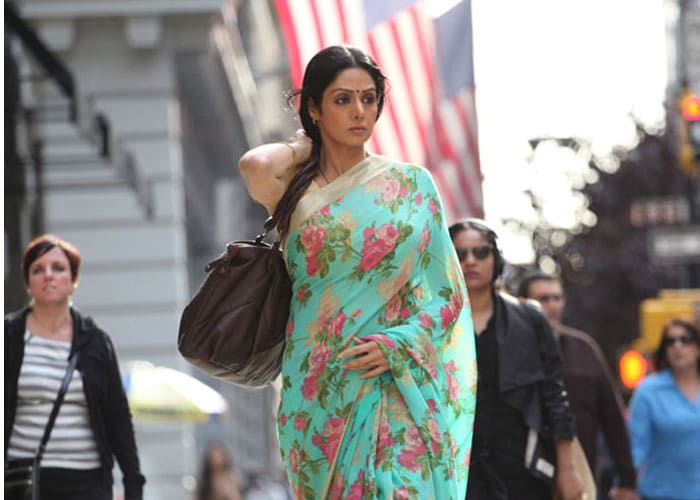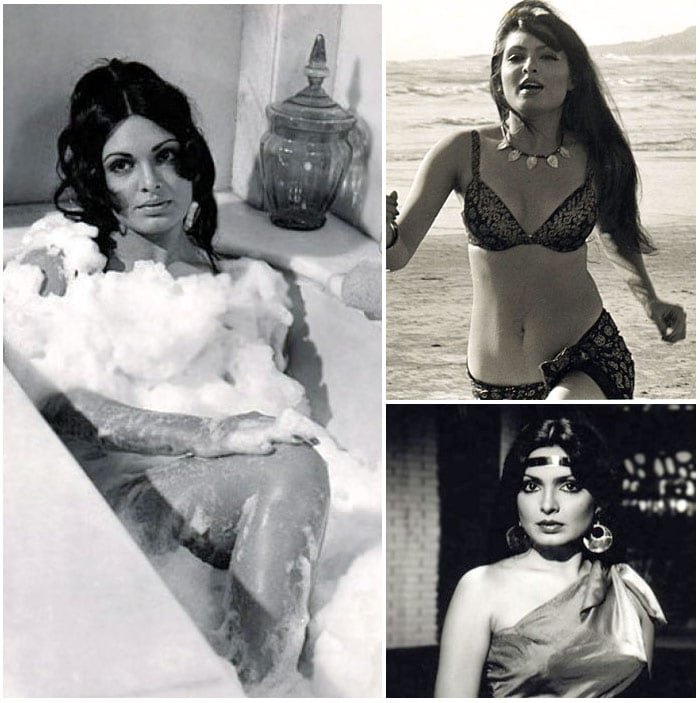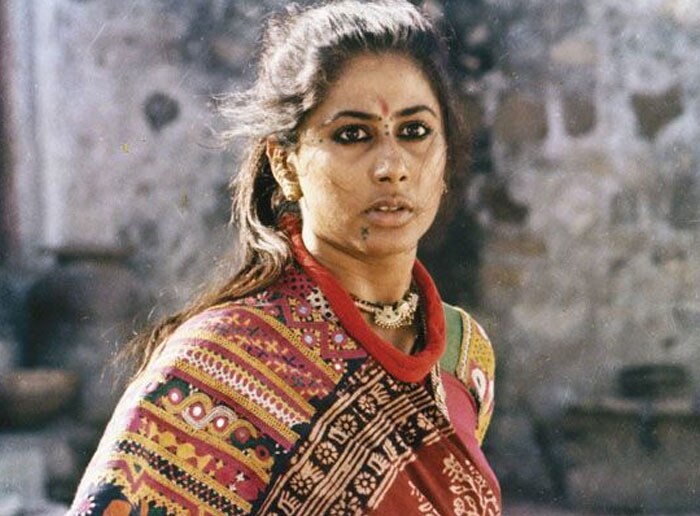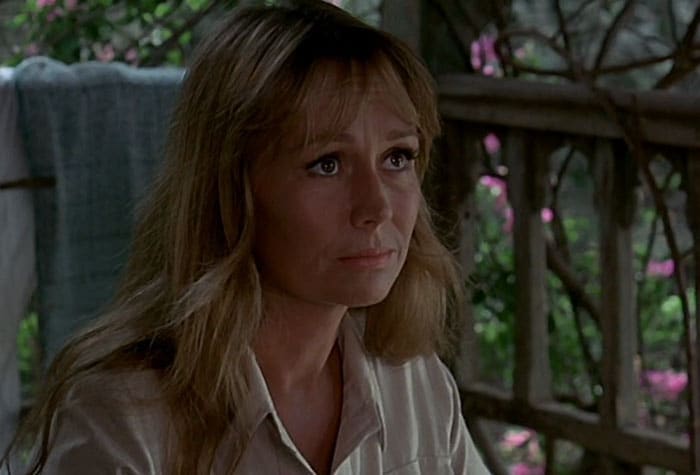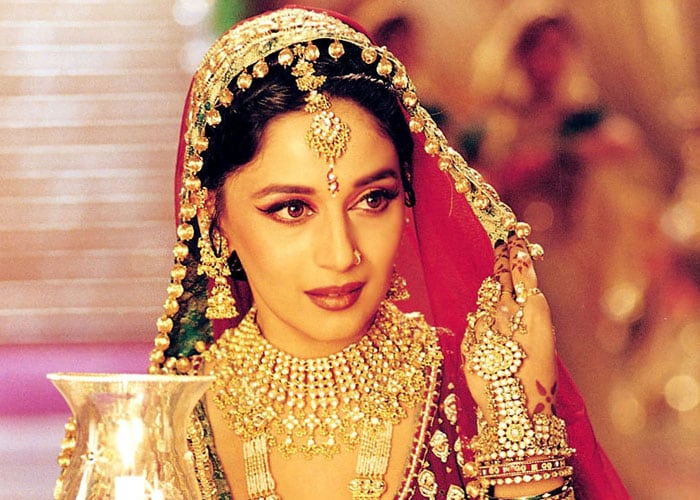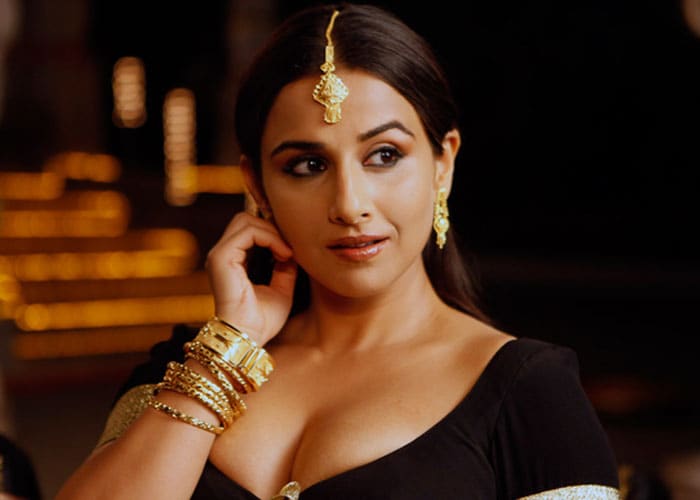On Women's Day, 20 rule-breaking actresses
Here is a look at the top 20 actresses of all time.
-
Meena Kumari: Tears may have been the Tragedy Queen's best weapon but it was her willingness to play some of cinema's most difficult characters – the neglected, alcoholic wife in Sahib Bibi Aur Ghulam, a courtesan in Pakeezah, an old widow caught in a gang war in Mere Apne - that made Meena Kumari unforgettable. In 1963, she made history at the Filmfare Awards be scoring all three nominations in the Best Actress category for Sahib Bibi Aur Ghulam (winning), Aarti and Main Chup Rahungi.
-
Fearless Nadia: Australian import Mary Ann Evans, best remembered for playing the masked Hunterwali in the 1935 movie of the same name, put her skills as a circus performer to good use as the ‘Lady of the Whip.' Blue eyes sparkling, blonde hair shining and dressed in provocative costumes, Fearless Nadia was a cinematic pioneer of women's lib. She did all her own stunts, and was one of the earliest action stars in Indian cinema.
-
Devika Rani: Rabindranath Tagore's great-grandniece was not one to follow convention. Co-founder of the Bombay Talkies studio with husband Himanshu Rai, Devika Rani blazed a trail with Achhut Kanya (1936), in which she played the taboo role of an untouchable girl. A four-minute long kissing scene with Himanshu Rai in Karma (1933) – still the longest – shocked orthodox Indian society. Devika Rani was the first ever recipient of the Dadasaheb Phalke award in 1969.
-
Waheeda Rehman: From her very first role as the vamp in C.I.D to her career-defining performance as the troubled, suicidal Rosie in Guide, Waheeda Rehman constantly challenged perceptions of the Bollywood heroine. She played a prostitute with a heart of gold in Pyaasa, a director's muse in Kaagaz Ke Phool, one third of a love triangle in Chaudhvin Ka Chand and a nurse driven mad by her love for her patients in Khamoshi. Unlike most other leading ladies, she transitioned smoothly to playing supporting characters, many of which were pivotal to the film.
-
Rehana Sultan: The charge of the FTII brigade was led by Rehana Sultan, the first actress from the institute to be cast in a lead role in Bollywood. Her first film was Dastak in which she played a young wife who inadvertently sets up home in a red-light area. Rehana Sultan's performance fetched her the National Award. She next played the lead in Chetna, a film about the rehabilitation of prostitutes. The movie made waves not just for it's subject matter but also for its poster which famously featured an inverted V formed by the actress' bare legs. Rehana Sultan was almost instantly slotted as a “sexy” actress, effectively ending her career almost before it began. She is still cited as a trailblazing actress by those who came after.
-
Nutan: Beloved for her girl-next-door persona and down-to-earth beauty, Nutan's fearlessness in playing unconventional roles cemented her status as one of India's finest actresses. Despite a glamorous beginning as winner of the Miss India pageant, Nutan's movie choices were often distinctly un-glam, chosen to showcase her talent rather than her looks.
Bandini, in which she played a convicted murderess, has been hailed as the finest performance of her career, and Nutan's other critical successes include Sujata in which she played an untouchable woman, Chhalia in which she played a girl disowned by her family, Saudagar in which she played Amitabh Bachchan's discarded wife, reincarnation movie Milan and Main Tulsi Tere Aangan Ki in which she plays a mother caring for her husband's illegitimate son.
Nutan was unique in the fact that she continued to appear in leading roles well into her 40s. She was 42 when she won her fifth Filmfare Best Actress award. -
Madhubala: The original woman with the million-dollar smile was a ray of sunshine in Bollywood. Beloved for her breezy comedy appearances in films like Mr & Mrs 55 and Chalti Ka Naam Gaadi, Madhubala also experimented with more serious, dramatic roles. She was only 16 when she upstaged established actor Ashok Kumar in supernatural thriller Mahal. Her film Hanste Ansoo (1950) was the first ever film to be handed an A certificate by the Censor Board.
She played one of the first ever double roles featuring two sisters – one a “good girl,” the other a cigarette-smoking dancer – in 1959's Kal Hamara Hai. The heart condition that would eventually kill her made her unable to take the many author-backed roles she wanted, but she did complete – despite being bruised and bedridden by her heavy costumes – the epic Mughal-e-Azam, which remained Bollywood's biggest hit till Sholay came along. -
Nargis: The first ever winner of the National Award for Best Actress, Nargis created a frenzy with her costumes in 1951's Awaara – knotted tops, off-shoulder dresses and a swimsuit. Known for her style and sophistication on screen, Nargis delivered the performance of her life in the landmark Mother India, playing a rural woman, abandoned by her husband, who endures immense hardship to bring up her sons. Nargis also signed off from the movies with a searing performance as a married woman with a multiple personality disorder in Raat Aur Din (1967).
-
Vyjayanthimala: It's not every actress who would turn down their Filmfare award for the first critical success in their career. Vyjayanthimala, the first South Indian actress to make it big in Bollywood, did just that, refusing to accept the Best Supporting Actress award for playing Chandramukhi in Bimal Roy's Devdas because she didn't think her role was a supporting one. She was the only actress to agree to play Chandramukhi, a role turned down by Nargis, Bina Rai and Suraiya. The first dancing star, Vyjayanthimala introduced semi-classical dance to Bollywood, especially Bharatnatyam which was her forte. She became one of the earliest female superstars of film, and appeared in blockbusters like Jewel Thief, Sangam and Nagin, as well as critically acclaimed films like Naya Daur, the Pygmalion-like Kathputli, Madhumati, Sadhna and Ganga Jumna.
-
Suchitra Sen: In an unforgiving industry which still looks askance at married heroines, Suchitra Sen not only forged a career but a hugely successful one at that. She was married with a daughter when she made it big in movies, and the audience couldn't get enough of her. With Bengali superstar Uttam Kumar, she formed a hit partnership in movies like Saptapadi, Sagarika and Harano Sur. Among her most acclaimed performances was Dweep Jeley Jaye, the original of Khamoshi starring Waheeda Rehman. She was the first Indian actress to receive an international Best Actress award, which she did at the Moscow Film Festival in 1963 for Saat Paake Bandha.
She also appeared in a handful of Hindi movies, memorably playing Paro opposite Dilip Kumar in Devdas and a fictionalized version of Indira Gandhi in Aandhi. -
Rekha: When Bhanurekha Ganesan's Bollywood debut Sawan Bhadon became a hit, it would have been natural for her to hop, skip, jump down the road to stardom. To her surprise and dismay, she was instead pilloried for her South Indian looks and accent, and unsophisticated persona. Undeterred, Rekha completely made herself over, undergoing one of the industry's most stunning transformations courtesy diet, yoga and grooming. From the ‘ugly duckling' emerged a breath-taking swan. Rekha's now-undeniable beauty was matched by incredible talent and a willingness to take risks. She played a rape victim in Ghar, a courtesan in Muqaddar Ke Sikandar and the classic Umrao Jaan – for which she won the National Award - and the “other woman” in Silsila. She also starred in critical successes like Kalyug, Baseraa, Ijaazat and Utsav. A comic turn in Khubsoorat fetched her a Filmfare Best Actress award. Never one to shy away from raising eyebrows, Rekha won both brickbats and bouquets for her performance as the wife who moonlights as a prostitute in Aastha, not least for its explicit scenes.
-
Hema Malini: Dream Girl and serial breaker of hearts, Hema Malini was known for her comic timing and her accomplished dancing as much as she was for her beauty. But though some of her most beloved performances were in the lighter vein – Seeta Aur Geeta, Basanti in Sholay, Indu in Satte Pe Satta – she was also acclaimed for her dramatic roles. She took roles that most other actresses of her age had refused, playing a widow in Andaaz, a negative character in Lal Patthar, a woman forced to marry her brother-in-law in Ek Chadar Maili Si. Hema Malini was also one of the rare actresses who continued to work after marriage, appearing in films like Razia Sultana, Naseeb and Andha Kanoon.
-
Sridevi: The legacy of Vyjayanthimala, Rekha and Hema Malini was solidified by Sridevi who began as a child star down South and became the arguably the biggest female star to have lit up Bollywood till the Nineties. She featured in hit blockbusters like Mr India, Himmatwala and Judaai; and delivered critically acclaimed performances in Sadma and Gumraah. Sridevi was the first actress to have scripts woven around her character, playing the central figure in films like Nagina, Chandni, Chaalbaaz and Lamhe. She quit films for 15 years after marrying producer Boney Kapoor, and then made the most successful comeback witnessed in mainstream Bollywood with 2012's English Vinglish.
-
Parveen Babi: As the drinking, smoking Anita who thinks nothing of going to bed with her lover in Deewar, Parveen Babi blurred the lines between heroine and vamp, an achievement that landed her on the cover of Time magazine, a first for an Indian. A rare actress to have embraced her sex symbol image, Parveen Babi was so popular at the peak of her career, that producers literally did have to queue at her door to sign her up. Despite her “bold” image, she was hailed for having brought a certain elegance and aloofness to the portrayal of Westernised, liberated female characters. Parveen Babi appeared in a string of blockbuster masala movies including Amar Akbar Anthony and Namak Halaal. She also experimented with smaller, off-beat films like
Yeh Nazdeekiyan in which she was the “other woman,” and Rang Birangi in which she played Amol Palekar's wife. -
Helen: Few Bollywood stories can rival that of Helen Richardson's real-life tale of trekking from war-torn Burma through Assam to Kolkata. Helen dropped out of school to support her family and got her big break in the song Mera Naam Chin Chin Choo from Howrah Bridge, starring Ashok Kumar and Madhubala.
After that, there was no looking back for Bollywood's most celebrated item girl, and between the 1950s to the 1970s, there was almost no movie of note in which Helen did not make an appearance. She endowed the role of vamp and cabaret dancer with an importance and respectability her predecessors had little dreamed of. She also played supporting characters, receiving a Filmfare nomination for Gumnaam and winning a Filmfare for Lahu Ke Do Rang. -
Smita Patil: Despite a relatively short career – just over a decade – Smita Patil was a leading light of parallel cinema, starring in acclaimed New Wave movies such as Manthan, Bhumika, Mirch Masala and Bazaar. In 1982, she co-starred in the ground-breaking Arth as the “other woman.” Smita Patil also appeared in blockbuster mainstream movies like Namak Halaal and Shakti. Winner of two National Film awards, Smita Patil almost always played characters that championed feminism and broke the mould in the male-dominated world of cinema.
-
Shabana Azmi: The actress with most number of National Awards – five- was, with Smita Patil, a leader in the New Wave of Indian cinema. Shabana Azmi proved her mettle with her very first film, Ankur, in which she played a married villager in an affair with a visiting college student. The role fetched her a National Award. She won the National Award for three years in a row from 1983 to 1985 for Arth, Khandahar and Paar. She notched a controversial first in Deepa Mehta's Fire, a story about two sisters-in-law in a lesbian relationship. Her performance in and as Godmother fetched her a fifth National Award.
-
Jennifer Kendal: Born in England and brought to India as a young girl by her travelling theatre artiste parents, Jennifer Kendal was envied by a million Indians for having married Shashi Kapoor and admired by many more for her performances in theatre and on-screen. Her film appearances were few, but they were powerful. Most notably, she played a lonely, retired Anglo-Indian teacher in Aparna Sen's 36, Chowringhee Lane, and an Anglo-Indian mother navigating a potentially deadly situation during the Indian Mutiny of 1857. Jennifer Kendal was nominated for a BAFTA for her performance in 36, Chowringhee Lane.
-
Madhuri: With her ethereal beauty and mega-watt smile, Madhuri, hailed as a second Madhubala, could have taken the easy, glamorous way to the top after Tezaab made her a star. Instead, she juggled her commercial hits like Beta, Hum Aapke Hain Kaun, Dil Toh Paagal Hai and Saajan with hard-hitting roles in films like Anjaam, Mrityudand, Parinda, Dharavi and Lajja. She played the undercover cop in Khalnayak and Chandramukhi in the remake of Devdas. Perhaps the most remarkable achievement of Madhuri's career was the fact that she appeared in a string of films with the three Khans – Aamir, Shah Rukh and Salman – all of who were considered junior to her, having made their Bollywood debuts well after she did, despite being two years older. This was no mean feat in a Bollywood obsessed with age, perception and relationship status. Madhuri took a break from Bollywood after getting married but has now returned with a vengeance in Dedh Ishqiya and Gulaab Gang.
-
Vidya Balan: Stardom came late to Bollywood's ‘fourth Khan.' Vidya was a veteran of television and ad films before she landed her first film, the Malayalam Chakram opposite superstar Mohanlal. On the strength of Chakram, Vidya was cast in another 12 Malayalam films. However, Chakram was postponed. So unprecedented was the shelving of a Mohanlal film, that Vidya was blamed and promptly replaced in the other 12 films. She was then cast in a handful of Tamil movies, and was either dropped or chose to quit every single one of them.
A good five years later, Vidya landed her first Bollywood film, Parineeta opposite Saif Ali Khan. There was no jinxing Parineeta, and with her very first performance, Vidya proved she was going to be no ordinary glamour-girl. As the central character Lalita, Vidya was a revelation and stole the thunder from senior actors Saif and Sanjay Dutt. Her subsequent film choices also proved to be unorthodox, and included a multiple-sclerosis patient in Guru, an unwed mother struggling with a progeria-stricken son in Paa, a femme-fatale in Ishqiya. With her stunning portrayal of South siren Silk Smitha in The Dirty Picture, Vidya established herself as the true successor to Sridevi, an actress who replaces the hero.
